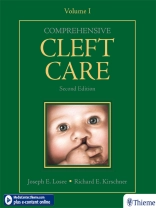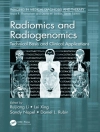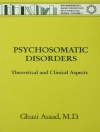Comprehensive Cleft Care is a complete clinical reference that addresses every aspect of the life-long care required by patients with orofacial clefting. Supported by a handsome full-color presentation, Comprehensive Cleft Care features heavily-illustrated chapters that provide unmatched coverage of everything from prenatal diagnosis to final orthognathic surgery. The inclusion of topics such as basic science research, mission work, and outcome measures make this an all-in-one clinical companion with coverage that cannot be found anywhere else. With its distinct holistic approach and perspectives from skilled specialists in a variety of disciplines, Comprehensive Cleft Care presents an unmatched overview of cleft repair and management. Volume One of the book covers non-surgical issues including: Embryology, Anatomy, Classification, Epidemiology, and Genetics; Nursing topics, Neuropsychosocial and Educational Aspects, Otologic, Audilogic, and Airway Assessment and Management, Outcomes and Research.
Mục lục
Volume I Nonsurgical
Part I Fundamentals
1 Fundamentals of Team Care
2 Clinical Outcomes Research and Evidence-Based Practice
3 Advocacy and Cleft Care
4 Global Aspects of Cleft Care
Part II Embryology, Anatomy, Classification, Epidemiology, and Genetics
5 Embryology of Orofacial Clefting
6 Anatomy of Cleft Lip and Palate
7 Classification of Orofacial Clefts
8 Epidemiology of Cleft Lip and Palate
9 Prenatal Diagnosis of Facial Clefting
10 Genetic and Epigenetic Perspectives of Orofacial Clefting
11 Genetics of Nonsyndromic Orofacial Clefting
12 Syndromes of Orofacial Clefting
13 22q11.2 Deletion Syndromes
Part III Nursing and Primary Care
14 Prenatal and Genetic Counseling
15 Feeding and Swallowing in Children With Cleft and Craniofacial Anomalies
16 Nursing Care of the Child With Cleft Lip and Palate
17 Assessment and Management of Children With Cleft Lip and Palate
Part IV Neuropsychosocial and Educational Aspects
18 Neuropsychological and Neuroimaging Aspects of Cleft Lip and Palate
19 Psychological and Behavioral Aspects of Orofacial Clefting
20 The Power of Difference: Social and Cultural Issues Associated With Clefts and Craniofacial Conditions
21 Educating the Child With Cleft Lip and Palate
22 The Role of Social Work in Cleft Care
23 Understanding Quality of Life
24 Understanding the Burden of Care
Part V Cleft Palate Speech and Velopharyngeal Dysfunction
25 Anatomy and Physiology of the Velopharynx
26 Communication Disorders Associated With Cleft Palate
27 Timing of Palatoplasty and Speech
28 Assessment of Velopharyngeal Function
29 Instrumental Measures of Velopharyngeal Function
30 Speech Therapy for Children With Cleft Palate
31 Noncleft Velopharyngeal Disorders
Part VI Otologic, Audiologic, and Airway Assessment and Management
32 Hearing Disorders and Middle-Ear Disease in Patients With Clefts
33 Audiologic Assessment and Management of Children With Cleft Palate
34 Pierre Robin Sequence: Assessment and Nonsurgical Management
35 Sleep-Disordered Breathing
Part VII Outcomes and Research
36 Assessment of Orthodontic Outcomes in Patients With Clefts
37 Speech: Perceptual and Functional Outcomes
38 Assessment of Cleft Lip and Nose Repair Outcomes












